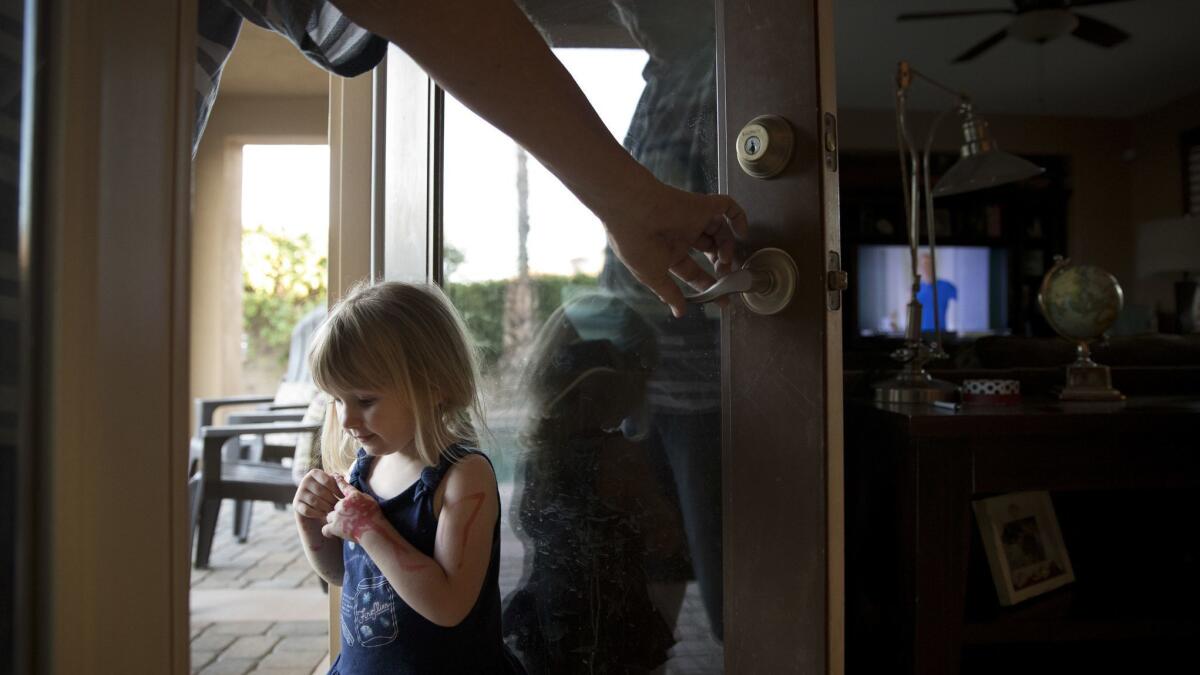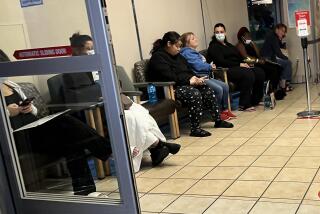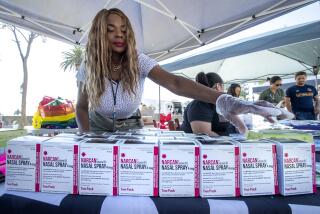Why opioids hit white areas harder: Doctors there prescribe more readily, study finds

- Share via
Across California, a blessing has become a curse for patients who dwell in overwhelmingly white communities: their ready access to opioid pain relievers.
A new study of prescribing practices across all of California’s 1,760 ZIP codes helps explain why opiates, some of medicine’s most addictive drugs, have wreaked more havoc on white communities than on communities of color.
The answer, at least in part, appears to lie in unconscious physician biases about race, ethnicity and pain that more typically leave minority patients underserved and undermedicated, authors of the new study said.
The resulting disparity in care may have briefly shielded minority communities from harm, said study leader Joseph Friedman, a medical student at UCLA. But for far longer and in many more instances, he said, “systematic racism within the healthcare system has led to … insufficient treatment” of minority patients’ physical and psychic pain.
The findings from California were published Monday in the journal JAMA Internal Medicine. They appeared alongside a report chronicling the changing racial mix of opioid fatalities in New York City and an analysis from the Centers for Disease Control and Prevention showing that while doctors cut their rate of opioid prescribing by 20% between 2015 and 2017, current levels remain almost three times higher than they were in 1999.
The California study reveals that, between 2011 and 2015, residents of neighborhoods with the highest proportions of white people were more than twice as likely to be prescribed an opioid pain reliever than were residents of neighborhoods where whites were most scarce.
In ZIP codes dominated by whites who were not of Latino or Asian heritage, opioid prescriptions flowed freely during the study period. And they were by far most generously offered in low-income white communities.
However, in ZIP codes with the highest proportion of minority residents, not even high income levels could close a yawning race and ethnicity gap in opioid prescribing.
The result is now all too familiar: an epidemic that has cut a swath of death and destruction through poor, rural white communities while largely sparing minorities.
(That has begun to change in recent years as the opioid street drugs heroin and fentanyl have become cheaper and more widely available, ensnaring more minority users. Between 2016 and 2017, the biggest increase in opioid-related drug overdose deaths — 56% — was seen among African Americans, according to the CDC.)
The new research offers a revealing glimpse of how addiction to opioids may have gained a foothold first in California’s rural white communities while largely bypassing black, Latino and Asian neighborhoods. Combing through the anonymous prescription records of close to 30 million Californians, the researchers found that in each of the five years they studied, roughly 24% of Californians left a doctor’s office at least once with a prescription for an opioid narcotic.
But the geographic distribution of those prescriptions was far from random.
In ZIP codes where incomes were lowest and minorities were fewest, 44.2% of all residents ages 15 and older received a prescription for an opioid medication in each year of the study. Meanwhile, in ZIP codes where incomes were lowest and the population skewed most toward blacks, Latinos or Asian Americans, just 20.3% received such a prescription each year.
Even in California’s most affluent minority neighborhoods, the volume of opioid prescriptions didn’t come close to the blizzard of prescriptions issued to those in overwhelmingly white neighborhoods. Across the state, 16.1% of residents there took home an opioid prescription in each of the study’s five years.
In the wealthiest ZIP codes where minorities were least prevalent, a quarter of residents received an opioid prescription in all five years. But as the income of these very white communities declined, opioid prescribing increased steeply.
Getting a prescription for opioids is certainly not an automatic gateway to abuse, addiction or death. But a recent report by the National Academies of Sciences, Engineering and Medicine found that, among people prescribed opioid pain relievers, at least 8% develop “opioid use disorder” and 15% to 26% engage in problematic behaviors that suggest they have become dependent. The report also noted that 600,000 Americans were using heroin in 2015, and a majority said they had started as prescription opiate users.
So leaving a doctor’s office with a prescription for opioids is at least a key marker of a person’s risk for addiction and death, Friedman said.
Friedman and his coauthors underscored that the disparities they saw in opioid prescribing were by no means a fluke. Indeed, they uncovered a larger pattern of unequal medication prescribing that puts minorities at a stark disadvantage relative to white people.
Compared to Californians living in mostly minority communities, residents of the state’s whitest ZIP codes were roughly three times more likely to have been prescribed other controlled substances, including anxiety-reducing benzodiazepines and stimulants used in treating attention deficit/hyperactivity disorder, they found.
Collectively, findings like these suggest that something more subtle is at work than just money, insurance coverage and access to healthcare, experts said.
Like all Americans, medical professionals bring what psychologists call “implicit biases” with them to work. While discrimination, hopelessness and poorer health are widely believed to make chronic pain a more common condition among minorities than among white patients, this bias leads doctors to mistrust or minimize a minority patient’s reporting of physical and mental distress. Their skepticism may be unconscious, but many studies have documented it. And they’ve linked such attitudes to less aggressive treatment of minority patients’ pain.
In study after study, doctors in primary care, emergency rooms and orthopedic care have been found to prescribe less medication — and less potent medication — to minority patients who describe the same symptoms and intensity of pain as do white patients. Among the motivations cited: concern that pain reports reflect drug-seeking behavior, or that minorities are more likely to fall prey to addiction.
Other drivers include more subtle beliefs about the pain thresholds.
A 2016 study by psychologists at the University of Virginia found that in a group of 222 white medical students, half felt that at least one of 11 false beliefs about racial differences was “possibly,” “probably” or “definitely” true. For example, asked whether they believed that the nerve endings of African Americans are less sensitive than those of whites, 8% of the first-year medical students and 14% of the second-year students said that claim was possibly, probably or definitely true.
“Medicine has a long, unsavory history of expecting people of color to tolerate larger levels of pain,” said Dr. Steven Woolf of Virginia Commonwealth University, who was not involved in the new study. “For the opioid epidemic it had a silver lining, but the discrimination is fatal when the denied treatment is lifesaving, such as cancer screening. This is why African Americans have higher mortality rates from cancer — they are less likely to get screened, their cancers are more likely to grow before being detected, and survival rates once diagnosed are often shorter.”
Bridget J. Goosby, who studies racial disparities at the University of Texas and was not involved in Friedman’s work, called it “a tragic and appalling irony” that African Americans have been “protected by the assumption that they cannot be believed when reporting their pain.”
But she cautioned that not far down the road, the same inequities that afforded this brief advantage are likely to work against the interests of people of color. As governments and medical groups crack down on opioid prescribing, African Americans will find it harder to convince doctors to prescribe needed pain relief, despite their often greater need. Meanwhile, she added, cheaper, more dangerous street drugs are already flooding their communities as the flow of prescription opioids is shut down.
“Does this exacerbate the already poor quality of treatment they receive?” Goosby said. “That’s a risk here.”
MORE IN SCIENCE







